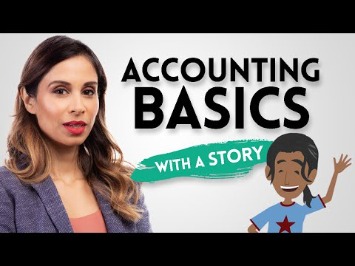Content
- Goodwill
- Goodwill Vs Other Intangible Assets: What’s The Difference?
- Goodwill In Financial Modeling
- How To Calculate Goodwill
- What Is Goodwill In Accounting? A Guide For Small Business Owners
- Goodwill Calculation Controversies
- Does A Sole Proprietorship Law Firm Have Goodwill Depreciation?
Goodwill cannot exist independently of the business, nor can it be sold, purchased, or transferred separately. As a result, goodwill has a useful life that is indefinite, unlike most of the other intangible assets. There are competing approaches among accountants as to how to calculate goodwill. One reason for this is that goodwill represents a sort of workaround for accountants. This tends to be necessary because acquisitions typically factor in estimates of future cash flows and other considerations that are not known at the time of the acquisition. A company should list goodwill on a balance sheet in cases when it purchases another business for a price higher than the recorded value of assets.Goodwill only shows up on a balance sheet when two companies complete a merger or acquisition. When a company buys another firm, anything it pays above and beyond the net value of the target’s identifiable assets becomes goodwill on the balance sheet. Consider the case of a hypothetical investor who purchases a small consumer goods company that is very popular in her local town. Although the company only had net assets of $1 million, the investor agreed to pay $1.2 million for the company, resulting in $200,000 of goodwill being reflected in the balance sheet. In explaining this decision, the investor could point to the strong brand following of the company as a key justification for the goodwill that she paid. If, however, the value of that brand were to decline, then she may need to write off some or all of that goodwill in the future.The reason for this is that, at the point of insolvency, the goodwill the company previously enjoyed has no resale value. Items included in goodwill are proprietary or intellectual property and brand recognition, which are not easily quantifiable. Practitioner goodwill refers to goodwill in regard to a specific line of business that is practiced, similar to practice goodwill.Purchased goodwill means the business simply purchased the other company, which is generally the concept in business goodwill. Impairment tests are also required if certain events have an impact on the business’s fair market value, such as layoffs, changes in competition, or changes in the overall business climate.While companies will follow the rules prescribed by the Accounting Standards Boards, there is not a fundamentally correct way to deal with this mismatch under the current financial reporting framework. The current rules governing the accounting treatment of goodwill are highly subjective and can result in very high costs, but have limited value to investors. Say a soft drink company was sold for $120 million; it had assets worth $100 million andliabilities of $20 million. The sum of $40 million that was paid over and above $80 million is the worth of goodwill and is recorded in the books as such. However, many factors separate goodwill from other intangible assets, and the two terms represent separate line items on a balance sheet.
Goodwill
Instead, management is responsible for valuing goodwill every year and to determine if an impairment is required. If the fair market value goes below historical cost , an impairment must be recorded to bring it down to its fair market value. However, an increase in the fair market value would not be accounted for in the financial statements. Private companies in the United States, however, may elect to amortize goodwill over a period of ten years or less under an accounting alternative from the Private Company Council of the FASB. Evaluating goodwill is a challenging but critical skill for many investors.
- Chip Stapleton is a Series 7 and Series 66 license holder, CFA Level 1 exam holder, and currently holds a Life, Accident, and Health License in Indiana.
- Accounting for business goodwill in your books requires that you subtract the fair market value of tangible assets from the total worth of the business.
- Impairment tests are also required if certain events have an impact on the business’s fair market value, such as layoffs, changes in competition, or changes in the overall business climate.
- Goodwill also does not include contractual or other legal rights regardless of whether those are transferable or separable from the entity or other rights and obligations.
Chip Stapleton is a Series 7 and Series 66 license holder, CFA Level 1 exam holder, and currently holds a Life, Accident, and Health License in Indiana. He has 8 years experience in finance, from financial planning and wealth management to corporate finance and FP&A. Purchase acquisition accounting is a method of recording a company’s purchase of another company. There is also the risk that a previously successful company could face insolvency. When this happens, investors deduct goodwill from their determinations of residual equity.Entities can discuss goodwill they have created in their annual reports, but not record it in their balance sheets. This is one of a series of articles focused on financial accounting disclosures and how you as a journalist can interpret and report on them.
Goodwill Vs Other Intangible Assets: What’s The Difference?
Amortization is an accounting technique used to periodically lower the book value of a loan or intangible asset over a set period of time. If there is no impairment, goodwill can remain on a company’s balance sheet indefinitely. These rules apply to businesses conforming to generally accepted accounting principles using a full accrual accounting method. If conditions indicate that the carrying value may not be recoverable, then tests for impairment are performed. 
Goodwill In Financial Modeling
Just look at the positive reputation enjoyed by companies like Apple and Starbucks, and how it affects the prices of goods sold. These companies can increase the purchase price of their products because of the public’s perception of their brand.Goodwill is an accounting practice that is required under the Generally Accepted Accounting Principles . Under these accounting methods, you’re required to recognize goodwill on your books after acquiring another company. Additionally, companies can utilize comparative data from sales of similar businesses in the industry. Doing this allows businesses to calculate goodwill as a percentage of the sale price. Even though goodwill is technically considered an asset, it is not always reported on thebalance sheet. Why not, because valuing a business is very subjective and can’t be measured easily or accurately. If Company B purchases all of Company A’s stocks for a total of $5 million dollars, then Company B paid $2 million in total goodwill for the privilege of purchasing the company. 
How To Calculate Goodwill
The first four articles introduce the financial accounting concepts utilized in this and future articles. The above is only a partial list of the factors that affect a business’s goodwill value. Combined with going concern value, companies should be sure to include all possible value propositions to arrive at the fairest and most accurate number. These accounts represent assets which cannot be seen, touched or felt but they can be measured in terms of money. Yearly, and only private companies may elect to amortize goodwill over a 10-year period. Goodwill is a special type of intangible asset that represents that portion of the entire business value that cannot be attributed to other income producing business assets, tangible or intangible. After all, goodwill denotes the value of certain non-monetary, non-physical resources of the business, and that sounds like exactly what an intangible asset is.
What is goodwill in accounting example?
Goodwill occurs when one company acquires another for a price higher than the fair market value of its assets. For example, Company ABC may purchase Company XYZ for more than the fair value of its assets and debts. The amount remaining would be listed on Company ABC’s balance sheet as goodwill.Marshall Hargrave is a stock analyst and writer with 10+ years of experience covering stocks and markets, as well as analyzing and valuing companies.
What Is Goodwill In Accounting? A Guide For Small Business Owners
Unlike other assets that have a discernible useful life, goodwill is not amortized or depreciated but is instead periodically tested for goodwill impairment. If the goodwill is thought to be impaired, the value of goodwill must be written off, reducing the company’s earnings. The impairment expense is calculated as the difference between the current market value and the purchase price of the intangible asset. In this sense, a business’s true worth is often far more than the value of its individual —tangible — parts.There’s a significant difference between goodwill and other intangible assets, such as a patent, intellectual property, or research and development. As such, it can’t be bought or sold independently, unlike intangible assets such as copyright, for example.These include white papers, government data, original reporting, and interviews with industry experts. We also reference original research from other reputable publishers where appropriate. You can learn more about the standards we follow in producing accurate, unbiased content in oureditorial policy. Companies must compare their goodwill balances to their estimated market values every year and adjust their books to reflect instances in which the carrying values are too high. It has an impact on the value of the business as it reduces the risk that its profitability will decline after it changes hands.Inherent goodwill is not purchased and results from within the same company. For example, this can result from changes in a company’s reputation, which then increases its value.While it’s possible to estimate goodwill, there’s no need to until the completion of the sale. Goodwill is an adjusting entry on the balance sheet to help explain why the cash spent to acquire a company is greater than the assets received in return. So, for instance, imagine that the book value of a company being sold is $10,000,000. But after acquiring the company, the market value decreases to $14,000,000. The acquiring company would need a goodwill impairment of $1,000,000 to explain this loss in value. The purchased business has $2 million in identifiable assets and $600,000 in liabilities. Finally, you need to take the excess purchase price and deduct the fair value adjustments, and you’ll have a figure for goodwill.
Goodwill Calculation Controversies
He graduated from the University of Maryland with a degree in Finance and currently resides in Boston, MA. For instance, if a highly-esteemed partner leaves a law firm, the value of the firm could decline significantly. Goodwill should account for individuals whose talents and reputations bring value to the firm. The offers that appear in this table are from partnerships from which Investopedia receives compensation.
Does A Sole Proprietorship Law Firm Have Goodwill Depreciation?
Meanwhile, other intangible assets include the likes of licenses and can be bought or sold independently. Goodwill has an indefinite life, while other intangibles have a definite useful life. The two commonly used methods for testing impairments are the income approach and the market approach. Using the income approach, estimated future cash flows are discounted to the present value. With the market approach, the assets and liabilities of similar companies operating in the same industry are analyzed. Referring to the definition of goodwill above, fair value is a formal GAAP term that many managers refer to as market value. When XYZ acquires Widget it will “fair value” all identifiable net assets.
History And Purchase Vs Pooling
The impairment loss is reported as a separate line item on the income statement, and new adjusted value of goodwill is reported in the balance sheet. Goodwill, in a sense, represents a business’s reputation within a market, which is something to consider when acquisitions are involved. Businesses that are well-known have gained popularity, or have other assets, such as branding and customer loyalty.
